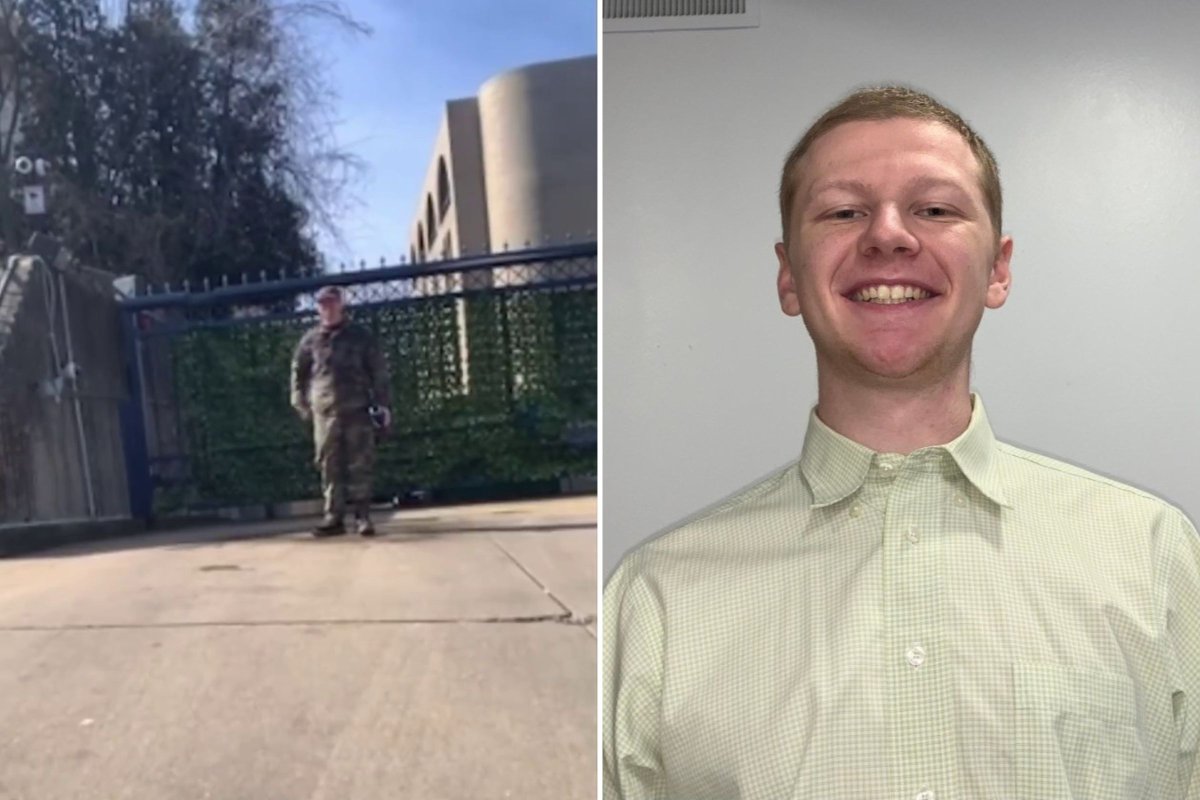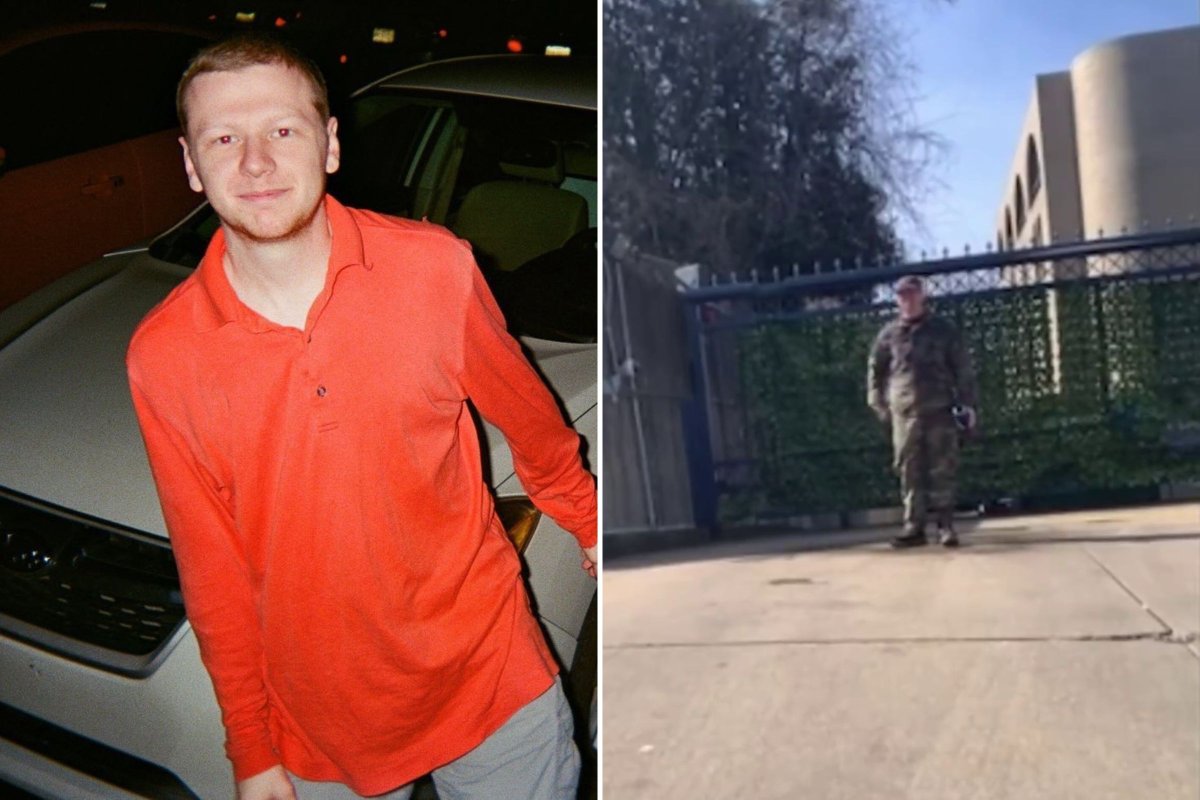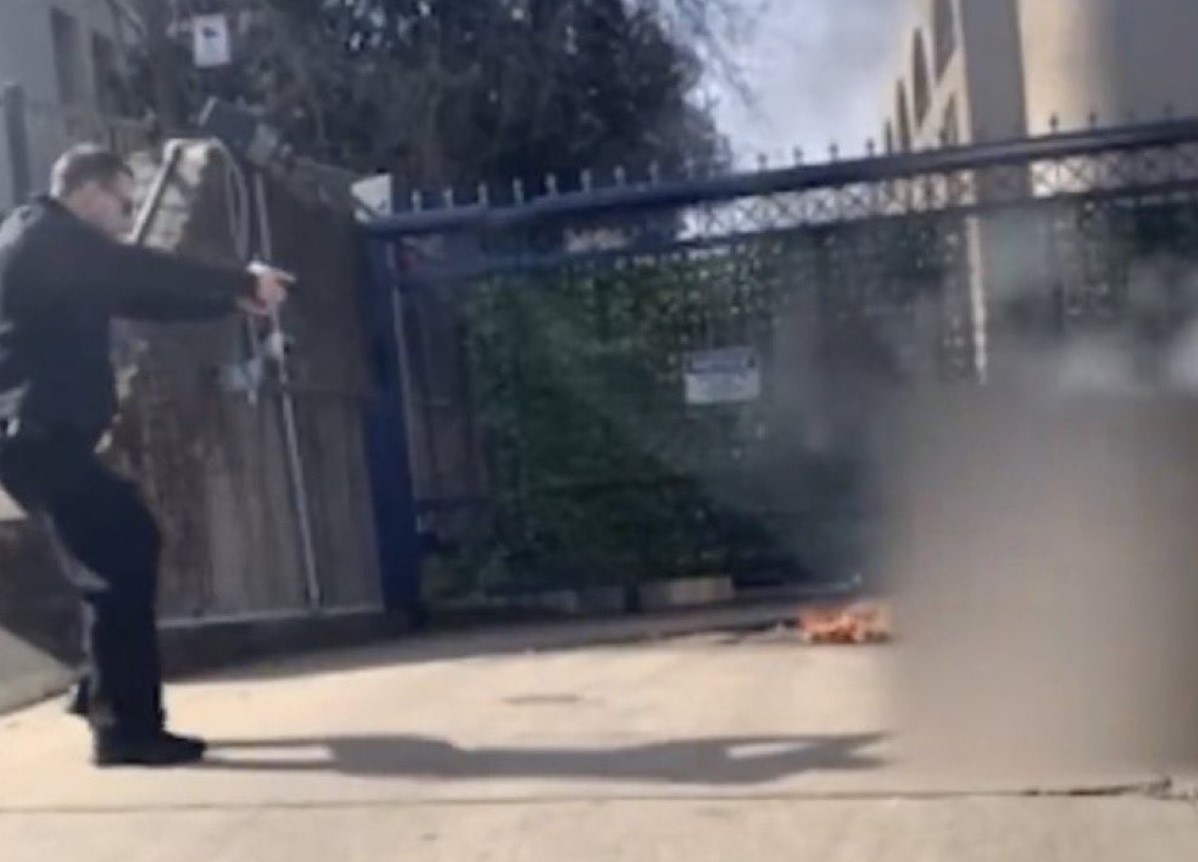The moment the world saw something truly unsettling, a young man, a member of the United States Air Force, named Aaron Bushnell, performed an act of self-immolation right outside the Israeli Embassy in Washington, D.C. on a Sunday afternoon. This event, which was streamed live on a video platform, then quickly spread across many parts of the internet, sparking a very wide range of immediate reactions and discussions. People were, in a way, left stunned by the raw and intense nature of what they had witnessed, or what they had heard about. It was, arguably, a stark and public expression of protest, a final, desperate plea that drew attention from countless individuals around the globe.
The footage, which showed the events unfold, became a central point of conversation, prompting many to question the reasons behind such a drastic act. It was, in some respects, a deeply disturbing scene, one that forced a lot of people to confront difficult truths about global events and individual despair. The speed at which this visual record moved through online communities meant that its impact was felt almost immediately, reaching far beyond the initial viewers and creating a ripple effect of shock and sorrow across various platforms. People wanted to know more, and they wanted to understand, too, what could lead someone to such a point.
This article aims to provide a clear look at the events surrounding the Aaron Bushnell footage, exploring who he was, what the recording showed, and how different groups of people reacted to it. We will, of course, try to put together the pieces of this very complex story, focusing on the facts that are known and the broad discussions that followed. It is about understanding the public response and the wider conversations that this particular piece of visual evidence brought to the forefront, without making any judgments about the act itself.
Table of Contents
- Who Was Aaron Bushnell?
- Aaron Bushnell - Personal Details and Background
- What Did the Aaron Bushnell Footage Show?
- How Did the Footage of Aaron Bushnell Become Public?
- What Were the Reactions to the Aaron Bushnell Footage?
- How Did Authorities Respond to the Aaron Bushnell Footage?
- The Discussion Around the Aaron Bushnell Footage
- Considering the Impact of Aaron Bushnell's Actions
- The Role of Media in Sharing Aaron Bushnell Footage
Who Was Aaron Bushnell?
Aaron Bushnell was, as a matter of fact, a twenty-five-year-old active-duty member of the United States Air Force. He held the rank of Senior Airman and was involved in cyber defense operations. People who knew him described him as a person with strong beliefs, someone who cared deeply about issues of justice and fairness in the world. He was, apparently, a thoughtful individual who spent time reflecting on difficult global situations. His service in the military had, it seems, given him a particular viewpoint on international affairs, which some suggest played a part in his later actions. Before the event that brought him into the public eye, he was, like your average person, living his life, doing his job, and engaging with the world around him, just a little differently perhaps.
His background included time spent in various roles within the Air Force, where he gained skills related to information technology and network security. Those who served with him often spoke of his intelligence and his commitment to his duties. However, there was also, sometimes, a sense that he harbored deep concerns about certain policies and events taking place globally. His actions on that fateful day, therefore, came as a shock to many who knew him, leaving them to grapple with the profound statement he intended to make. He was, in a way, a person who felt things very deeply, and that intensity seems to have driven his final, public act.
Aaron Bushnell - Personal Details and Background
Here is some information about Aaron Bushnell, gathered from public records and reports:
| Full Name | Aaron Bushnell |
| Age | 25 years old |
| Military Branch | United States Air Force |
| Rank | Senior Airman |
| Role | Cyber Defense Operations Specialist |
| Location of Incident | Outside the Israeli Embassy, Washington, D.C. |
| Date of Incident | February 25, 2024 |
What Did the Aaron Bushnell Footage Show?
The footage of Aaron Bushnell, which became widely circulated, showed him approaching the Israeli Embassy building. He was wearing a military uniform. As he stood in front of the embassy, he began to speak into a camera, which was, apparently, set up to record his actions live. He stated his intention to engage in an extreme act of protest against what he called "genocide." The video then captured the moment he used an accelerant on himself and set himself on fire. Throughout this incredibly difficult moment, he repeatedly shouted "Free Palestine." This was, obviously, a very difficult thing for anyone to witness, even through a screen.
The recording continued as emergency services, including Secret Service agents, arrived on the scene to try and put out the flames. The visual evidence of the incident was, really, very stark and showed the raw, unedited nature of his protest. The sound of his voice, the shouts, and the responses of those around him were all captured, providing a complete, if disturbing, account of the event. It was, perhaps, one of the most direct and unfiltered forms of protest seen in recent times, made even more impactful by its immediate distribution across digital spaces. The footage, in essence, provided a window into a moment of extreme despair and conviction.
How Did the Footage of Aaron Bushnell Become Public?
The initial public appearance of the Aaron Bushnell footage was through a live streaming platform. He himself, it seems, set up the broadcast, intending for his act to be witnessed by a broader audience. Once the live stream concluded, or was cut off, copies of the recording were then very quickly saved and shared by individuals who had been watching. These saved versions were then uploaded to various social media platforms, including X (formerly Twitter), TikTok, and Reddit. This immediate re-sharing meant that the visual record of his protest spread with remarkable speed across different online communities. It was, in a way, a testament to how quickly information, especially something so shocking, can move in our connected world.
The nature of social media platforms, with their ability to allow users to instantly share content, meant that the footage reached millions of people within hours. Despite efforts by some platforms to remove the graphic content, the sheer volume of re-uploads and shares made it incredibly difficult to contain. This rapid spread led to widespread discussion and debate about the ethics of sharing such material, as well as the meaning behind Bushnell's actions. It was, quite literally, everywhere for a time, shaping public discourse in a very immediate sense. The ability to share the Aaron Bushnell footage so widely also meant that the conversation around it grew very quickly.
What Were the Reactions to the Aaron Bushnell Footage?
The reactions to the Aaron Bushnell footage were, honestly, incredibly varied and often very intense. Many people expressed deep shock and sadness at the sight of such a desperate act. There was, of course, a widespread feeling of sorrow for the loss of a young life and the extreme pain he must have been experiencing. Others felt a sense of anger, directing it at the circumstances that might have led him to take such a measure, or at the broader political situations he was protesting. It was, in some respects, a moment that forced people to confront their own feelings about very difficult global issues.
On one hand, some viewed his act as a profound and tragic protest, a desperate call for attention to a cause he believed in deeply. They saw it as a powerful, albeit horrifying, statement against perceived injustices. On the other hand, many condemned the act itself, not only for its self-destructive nature but also for the method of protest, which some found disturbing and ineffective. There were also discussions about mental well-being, with some suggesting that his actions might have been influenced by a state of deep distress. The footage, you know, sparked a lot of soul-searching and very complex conversations among people from all walks of life.
How Did Authorities Respond to the Aaron Bushnell Footage?
Following the event captured in the Aaron Bushnell footage, official responses came from various agencies. The United States Air Force confirmed that Aaron Bushnell was an active-duty member and expressed condolences to his family. Law enforcement agencies, including the Secret Service and local police, launched an investigation into the incident, as is standard procedure for such serious events. Their focus was, typically, on understanding the circumstances leading up to the act and ensuring public safety around the embassy area. They had to, naturally, gather facts and process the scene.
The embassy itself, as a matter of fact, remained secure, and its operations were not significantly disrupted, although the area was, for a time, a site of increased security and public attention. Official statements tended to be factual, confirming the identity of the person involved and the nature of the incident, while largely avoiding commentary on the motivations behind the act. The response was, essentially, about managing the immediate aftermath and gathering information, rather than offering interpretations of the very complex situation that unfolded.
The Discussion Around the Aaron Bushnell Footage
The Aaron Bushnell footage prompted a wide-ranging discussion that went far beyond the immediate shock of the event. People began to talk about the nature of protest in modern times, questioning what makes an act of defiance truly impactful and whether extreme measures are ever justified. There was, obviously, a lot of debate about the role of individuals in drawing attention to large-scale global conflicts and the personal toll such engagement can take. It was, in a way, a very sobering moment for many, leading to deep reflection.
Conversations also turned to the ethics of sharing graphic content online. Many questioned whether it was responsible to circulate such disturbing visual material, while others argued that it was important for people to see the reality of what happened. This led to discussions about content moderation policies on social media platforms and the responsibility of users in deciding what to view and share. The footage, you know, became a flashpoint for conversations about freedom of expression versus the need for protection from potentially traumatizing images.
Considering the Impact of Aaron Bushnell's Actions
The impact of Aaron Bushnell's actions, as captured in the footage, continues to be considered by many. His act, while deeply personal, became a public symbol for different groups, each interpreting it through their own lens. For some, it solidified their conviction about the urgency of the cause he championed. For others, it highlighted the profound despair that can arise from feeling powerless in the face of global events. It was, in some respects, a very stark reminder of the human cost of distant conflicts.
The event also brought renewed attention to the mental well-being of military personnel, prompting discussions about the support systems available to those serving their country. The questions raised by the Aaron Bushnell footage are, arguably, not easily answered, and they continue to resonate, encouraging ongoing conversations about individual responsibility, collective action, and the search for peace in a very troubled world. His act, essentially, left a lasting mark on the public consciousness, forcing many to confront uncomfortable realities.
The Role of Media in Sharing Aaron Bushnell Footage
The way media outlets handled the Aaron Bushnell footage was, basically, a significant part of the wider conversation. News organizations faced a difficult choice: how much of the graphic material should be shown to the public? Many decided to exercise caution, choosing to describe the events rather than displaying the raw, disturbing video. This was, typically, done out of a concern for the well-being of their audience and to avoid sensationalizing a tragic event. They had to, obviously, balance the need to inform with the responsibility to protect.
However, the immediate and unfiltered nature of social media meant that the footage was already widely accessible, regardless of traditional media decisions. This highlighted a growing challenge for news organizations in the digital age: how to report on sensitive events when the public already has access to raw, unedited content. The discussion around the Aaron Bushnell footage, in this context, also became a discussion about journalistic ethics and the evolving landscape of information sharing. It was, in a way, a very clear example of how quickly news can spread and how media outlets must adapt to that reality.


